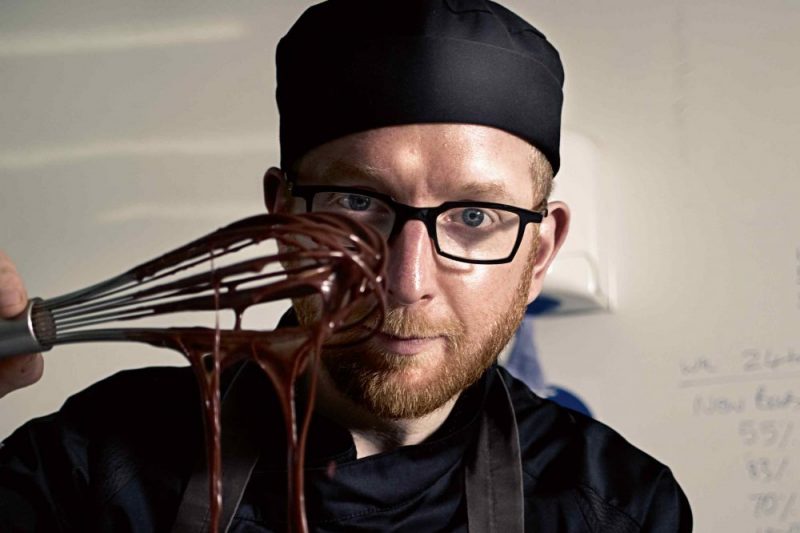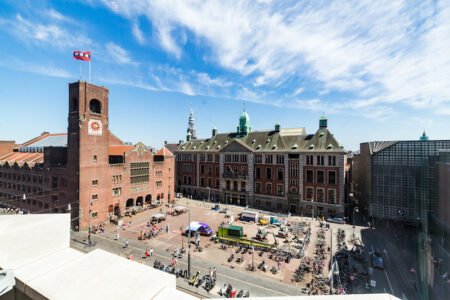Paul A Young still enjoying the sweetest of career paths

As a former holder of the outstanding British Chocolatier accolade by the International Chocolate Awards, Paul A Young has hand-crafted a remarkable career to date. Neill Barston speaks to him about some of the challenges of being an artisan producer
Anyone who saw artisan chocolatier Paul A Young’s appearance on the BBC TV series The Sweet Makers, would have been left in no doubt about how much he cared for his craft.
The award-winning confectionery specialist was tasked along with a small group of fellow industry experts to recreate the look and feel of sweets from bygone ages.
While the challenges of working with basic facilities may have thrown some of the show’s participants, Paul, who remains fiercely proud of maintaining hand-made production methods, took to with comparative ease.
During the show, the group was tasked with making everything from a Tudor sugar banquet, through to giant Easter eggs, as well as using some traditional Georgian recipes to fashion a sweet dessert worthy of royalty.
As Paul, who now runs three confectionery stores in London, explains, the experience that was screened last year, re-affirmed his belief in taking on a career that has tested his limits of creativity and determination.
“I think people watching the BBC series thought that I had a factory for my business, but I still just have a kitchen in each of the three stores that we operate, which would take a lot of scaling up to be really industrial with.
“So more than anything, what that show made me realise was that I love being an artisan maker, and it’s the first full series of its kind that I’ve done.
“We had no idea from the production company as to what we would be making in each episode, which in itself was a very artisan approach. With product development there’s a real joy in what you’re doing and there is an art to it – you have to really enjoy what you are working on.”
As he explains, he believes he’s the only chocolatier working in a completely artisan, back-to-basics fashion each day, using fresh ingredients. He’s particularly careful that processes such as preservatives, additives and concentrates are nowhere to be seen in his product range. This has meant that in its present guise, the prospect of reaching a mass market is not something that’s on his radar, and that is a factor that he seems perfectly at ease with – going bigger clearly isn’t always a route to securing personal happiness.
More than a decade on from opening his first store in Islington, UK, with business partner James Cronin, he says that he is enjoying the challenge as much as ever in crafting unique flavours, and pushing the boundaries of confectionery. His creations have used everything from edible gold leaf and sea salted caramel, and Thyme Martini, through to an unlikely, yet successful pairing of chocolate with California prunes, sold as a Valentine’s Day special.
Conjuring up such exotic flavours is something he says that he’s always enjoyed, and his desire to be creative in the kitchen was instilled at a young age.
“I’d learned how to bake since I was about seven or eight. We lived in a small mining town in the 1970s, where the nearest supermarket was about 10 miles away and our gran baked everything fresh,” , says the artisan, adding that he originally entertained ideas of being a musician or artist.
But after attending a chef’s course in Durham, and studying for a catering degree, he opted against that route as it was based on hotel chain management, which did not appeal.
“Back then, you couldn’t get a pastry chef job unless you were prepared to just be baking apple pies, but I had bigger ambitions, and managed to gain a role working for Marco Pierre White in London at the Criterion.
“Marco must have seen something in me, but when you were working for him, he really did have his ‘boss hat on,’ and everyone showed respect to him.
“But he would offer opportunities to learn and do more within the restaurant. That was hard work there, with shifts sometimes being up to 16 hours,” recalls the chocolatier, who adds it was refreshing to catch up with Pierre White years later for a joint role cooking on the Britannia cruise ship in the Caribbean, under very different circumstances.
As he explains, it has taken him some journey to work his way up the ranks to his present position, believing that achievement through hard work is the best route to success.
He’s also keenly aware of wider major challenges facing the industry, and says that confectionery companies should be placing even greater resources into supporting African farmers to ensure the future of the confectionery business.
Rise of artisan movement
On his own work, he reports a welcome resurgence of interest from consumers seeking confectionery and luxury treats that are far removed from processed products.
With trends analysts agreeing that the public is increasingly curious about the origins of their food – which extends to confectionery, the chocolatier says this has driven innovation within the sector.
He says: “There’s definitely been a revival in artisan food, which I think is down to the fact that it’s something that can be done at home – you don’t have to make a massive investment.
“It could just start off by someone cooking for friends and family – which is, in fact, how many big chocolate companies originally started out.
“What is really good about being an artisan is that it can give people a sense of direction and worth, whether that’s setting out on an original goal, or someone changing career,” explains Young, adding that one factor that has influenced the popularity of artisans is that people want to know where their food comes. He says consumers are now more willing to pay up to £5 for a loaf of bread, or chocolate bar, if it is something that is not mass produced.
“There’s a real fun side to chocolate and it is something that everyone loves, as most days people will eat an item that has chocolate in it. I think it’s something that isn’t intimidating, and not meant to be taken too seriously. It’s easy to learn the differences about it all and its origins, and you could go on to write a book on it as I have done,” adds the confectioner on what has proved a memorable series of adventures in chocolate.



